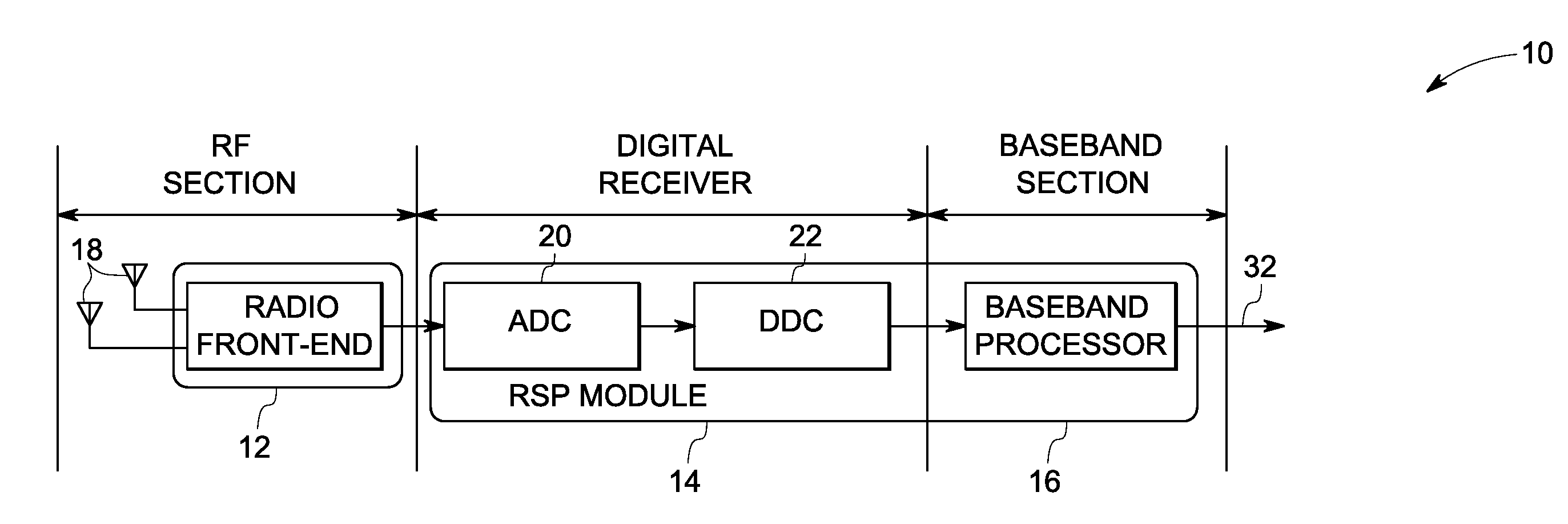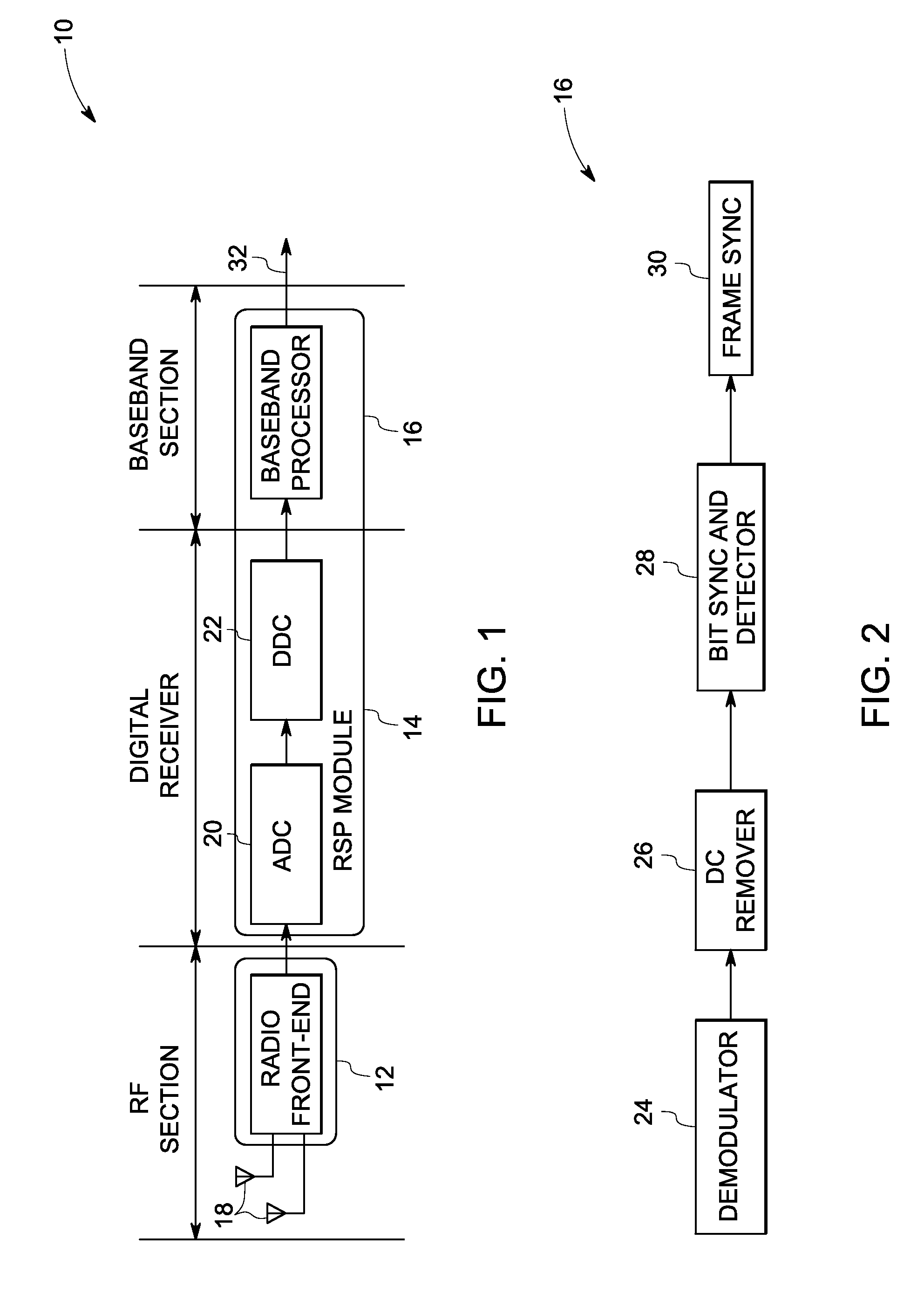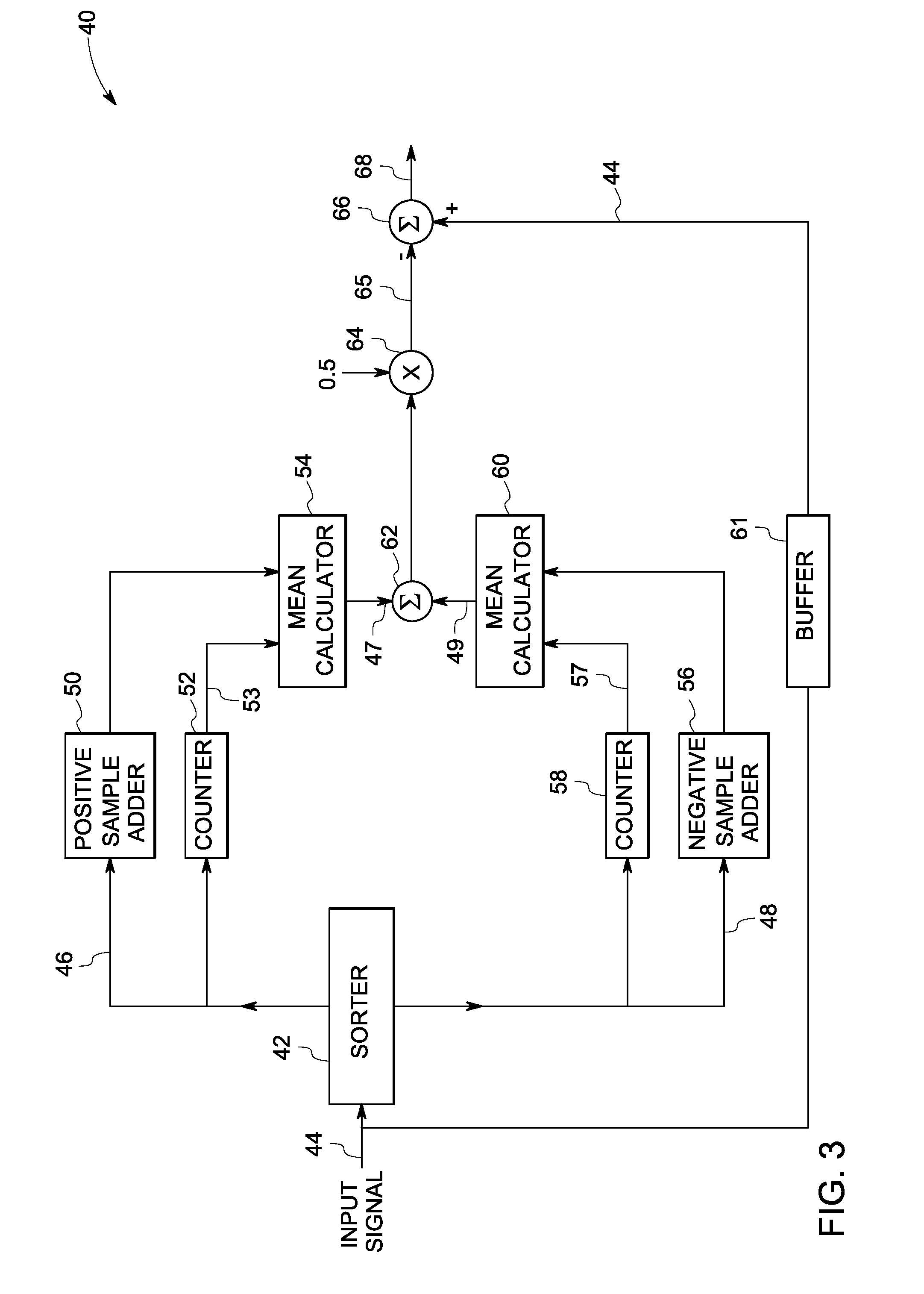DC offset compensating system and method
- Summary
- Abstract
- Description
- Claims
- Application Information
AI Technical Summary
Problems solved by technology
Method used
Image
Examples
Embodiment Construction
[0015]FIG. 1 is a block diagram of an exemplary digital radio receiver 10. Digital radio receiver 10 includes a radio front-end module 12, a digital receiver module 14, and a base-band processor 16. Radio front-end module 12 receives a radio signal and base-band processor 16 generates a de-modulated digital output signal 32.
[0016]Radio front-end module 12 is configured to amplify signals received from an antenna 18. Digital receiver module 14 includes an analog to digital converter 20 to convert the signals from radio front-end module 20 to digital signals. Digital receiver module 14 further includes a digital down converter 22 (DDC) to convert a digitized signal centered at a carrier frequency to a base-band signal centered at zero frequency. In addition to down conversion, DDCs typically decimate to a lower sampling rate, allowing further signal processing by lower speed processors.
[0017]FIG. 2 is a block diagram of base-band processor 16 of FIG. 1. Base-band processor 16 includes...
PUM
 Login to View More
Login to View More Abstract
Description
Claims
Application Information
 Login to View More
Login to View More - R&D Engineer
- R&D Manager
- IP Professional
- Industry Leading Data Capabilities
- Powerful AI technology
- Patent DNA Extraction
Browse by: Latest US Patents, China's latest patents, Technical Efficacy Thesaurus, Application Domain, Technology Topic, Popular Technical Reports.
© 2024 PatSnap. All rights reserved.Legal|Privacy policy|Modern Slavery Act Transparency Statement|Sitemap|About US| Contact US: help@patsnap.com










